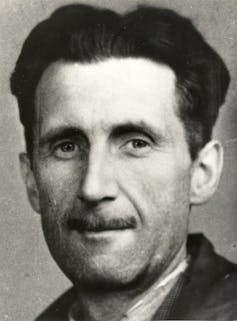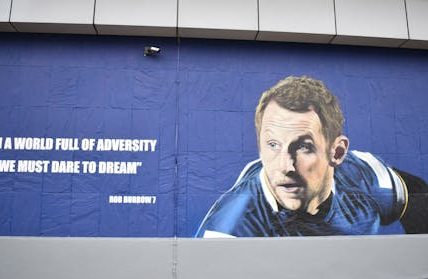Johnny Depp’s new film about Modigliani is in danger of downplaying his importance as an artist – an art expert’s verdict
In 2018 an oil painting of a nude by the Italian artist Amedeo Modigliani broke a world record when it sold at Sotheby’s for US$157.2 million (£115.2m). It was created in 1917, at a time when Modigliani was unable to sell his pictures for more than a few francs.
Johnny Depp’s new film Modi: Three Days on the Wings of Madness explores the artist’s struggle to sell his work, and the tension that existed between his own idealism and the need to be commercially minded.
The film also addresses Modigliani’s mental instability, brought on by self-medication while suffering from tuberculosis. He took refuge in hashish and alcohol (including absinthe), and this movie pulls out all the stops when it comes to visualising the horrors and hallucinations that afflicted him as the illness progressed and the drugs took hold.
Set against the background of Paris during the first world war, the action takes place over three days in 1916. It takes its inspiration from Modigliani – A Play in Three Acts by Dennis McIntyre and remains remarkably faithful to the plot.
Looking for something good? Cut through the noise with a carefully curated selection of the latest releases, live events and exhibitions, straight to your inbox every fortnight, on Fridays. Sign up here.
This revolves round Modigliani’s friendship with the artists Chaïm Soutine (Ryan McParland) and Maurice Utrillo (Bruno Gouery); his tempestuous relationship with the English poet and writer Beatrice Hastings (Antonia Desplat); and his reliance on the art dealer Léopold Zborowski (Stephen Graham). It is Zborowski who sets up a much-anticipated meeting with an important collector, Maurice Gangnat (Al Pacino).
Modigliani, brilliantly and energetically portrayed by Riccardo Scamarcio, comes across as a passionate, idealistic and irresistible genius. However, he is also haunted by ghosts, and a slave to his drug addiction, perhaps echoing Depp’s own past.
Depp’s film – his second as director – never loses pace. In one scene Modigliani plunges through a stained-glass window. In another he shocks potential buyers by setting fire to a painting; in a third he trashes his studio, destroys his most recent sculptures and slashes several canvases.
The title of the film, Modì, was the artist’s nickname, but is also a play on the French word maudit, meaning cursed. As a young man Modigliani was an avid reader of the German philosopher Nietzsche, whose own descent into madness was punctuated by periods of lucidity.
Nietzsche saw no clear distinction between dreaming and waking, and the film reflects this in the way in which hallucination, memory and reality become confused. Modí masks his increasing pain with alcohol, drinking with his artist friends Utrillo and Soutine in the seedy Bateau Lavoir in Montmartre.
Of Belarusian extraction, Soutine, like Modigliani, was a Jewish outsider. In 1916 the two artists occupied neighbouring studios in La Ruche, a down-at-heel artists’ residence in the 15th arrondissement of Paris. Before he achieved commercial success, Soutine lived in abject poverty, forced to sleep rough in stairways and on park benches. He suffered from depression and anxiety, and his internal turmoil is reflected in his highly expressive work.
The third member of the triumvirate, Maurice Utrillo, also suffered from mental health issues, and took up art to ward off depression. The movie alludes to this as the reason he was unable to enlist during the war. Instead, he spent regular periods in hospitals and mental institutions and painted many of his views of Paris from postcard images.
Modigliani, too, tried to join up, but was refused due to poor health. In the film this memory sparks an episode of disturbing hallucinations, featuring walking wounded with horrific injuries, and a plague doctor doubling as a spectre of death, a leitmotif for Modigliani’s own fear of dying.
Following such nightmarish episodes, Modigliani turns to Beatrice Hastings, who adopts the role of carer (and, as the film implies, substitute mother) as well as lover. She was however, motivated as much by Modigliani’s genius, as by her own burgeoning career as a poet, literary critic and co-editor of the British avant-garde magazine The New Age.
In the film she is frustrated by Modigliani’s idealism. She encourages him to be more pragmatic and commercially minded and berates him, not for embracing life, but for constantly “running from death”.
She is also the artist’s muse, the model for his “masterpiece”, a reclining nude, and an unfinished sculpted head of a woman. Both are cinematic devices; there is no evidence that Beatrice ever posed nude, while the sculpted head was produced in 1911-12, before the two had even met. Despite this, both works play a central role in the film’s denouement, sparking the artist’s falling out with Zborowski.
The climax of the movie is the artist’s much-anticipated meeting with Gangnat, a rich industrialist and significant figure in art history, whose collection included 160 works by Auguste Renoir. The meeting, predictably, is a disaster, but, even though he leaves without a penny, Modigliani has the last word: “I am much richer than you, Monsieur Gangnat,” he insists, “You have merely existed…I have lived”.
Was Modigliani as idealistic as the film portrays? Possibly, but perhaps not, for by 1916 he had already met a new and influential dealer, Paul Guillaume, who would ensure a commercially successful future, not only for our hero, but also for Soutine and Utrillo.
In the end, the film is an enjoyable romp, even if it is in danger of downplaying Modigliani’s importance as an artist in favour of the more sensational aspects of his life.
And yet it is undeniable that his life really did read like a film script. He died of tuberculosis in January 1920 at the age of 35. Two days later his common-law wife, Jeanne Hébuterne, pregnant with their second child, took her own life. Soon after, however, thanks to dealers such as Zborowski and Guillaume, the importance of Modigliani’s work was finally recognised, and today he is remembered as one of the most significant artists of his generation.
Frances Fowle does not work for, consult, own shares in or receive funding from any company or organisation that would benefit from this article, and has disclosed no relevant affiliations beyond their academic appointment.



